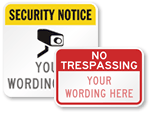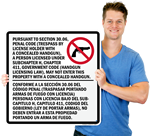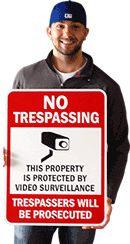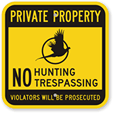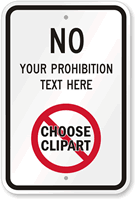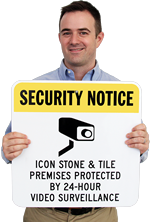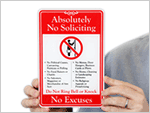Neighborhood Watch and the best sign for the job
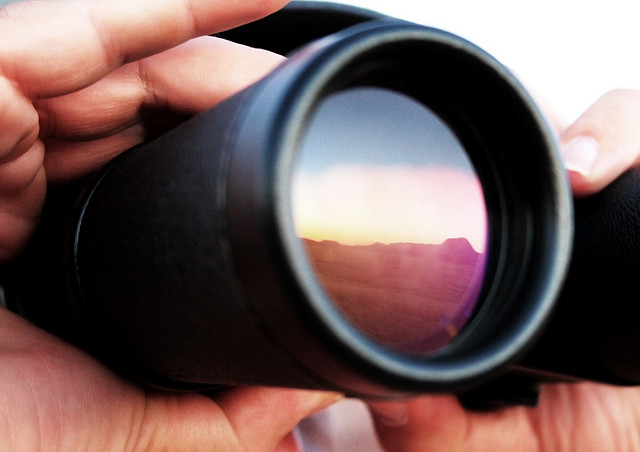
Vigilant neighbors have long been crucial in preventing crimes. Image by sntgmdm.
The concept behind Neighborhood Watch is brilliantly simple: ask the people with the most at stake to actively participate in their own safety. The system works by reducing the opportunities for crime, not by trying to change the complex social-cultural-economic-personal forces motivating any one criminal.
Neighborhood Watch, the modern iteration of which launched in 1972, is one of the oldest and most effective crime prevention programs in the country. Neighborhood Watch trains people to be extra sets of roving eyes and ears for the police force. For the safety of the neighborhood’s children and property, enlisted volunteers put on neon vests and walk the nighttime streets, flashlights in hand. Other times, it’s the nosy homebody peeking out of her window, watching for delinquent activity on the street, like teenage kids sneaking puffs of weed, or a black-clad robber sliding open a bedroom window to steal the Jones’ jewels.
The National Sheriffs’ Association, which works closely with Neighborhood Watch programs, recommends that watchers request data from their local precincts to find out about the nature of the crimes in the neighborhood — often, perceptions stray far from the facts.
Once you have accurate knowledge of the types of crimes to watch for, then you’re ready for another pillar of the Neighborhood Watch program: signs.
Signs remind would-be criminals that the neighbors are watching out for each other, even if they don’t immediately spot an earnest, vested mom in binoculars watching their every move.
For full efficacy, Neighborhood Watchers should post the sign most appropriate to the crimes they are trying to prevent.
McGruff the Crime Dog

McGruff the Crime Dog has been an effective tool in helping kids fight crime for over three decades. Customizable sign available here.
This loveable anthropomorphic hound in a detective’s trench has been around since 1980, and is one of the most accessible ways to make children aware of the sort of crimes they can participate in preventing. MySecuritySign recently collaborated with the National Prevention of Crime Council to launch new McGruff school safety signs.
The hours between 3 p.m. and 6 p.m. are the witching hours of teenagers looking to get in trouble between school and when their parents get home from work. Additionally, some 2.8 million American high school students manage to abuse drugs during the school day, and in 2009–10, 1.18 million violent crimes were committed in public schools. Clearly, there’s a need for prevention and enlisting kids to keep an eye out is a good way to do it.
If your neighborhood’s perpetrators — and victims — of crime are kids themselves, McGruff signs will be most effective. They’re more relevant to the crimes kids may encounter — like bullying, drug abuse, petty theft or playing with dangerous weapons — than ones that suggest crimes beyond a child’s abilities to prevent (like robbery).
Research has also shown that crime prevention signs are more effective when they are personalized using simple language, an option that can be achieved in seconds with these updated McGruff signs.
Burglar signs
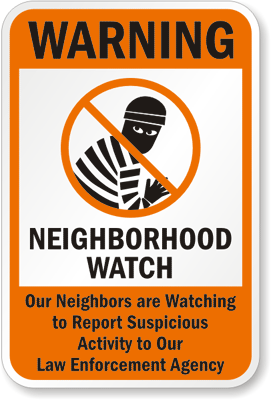
This iconic burglar sign is most appropriate if theft of personal property is an issue in your area. Available here.
One of the iconic images of Neighborhood Watch programs is Boris the Burglar, a graphic interpretation of a mask-wearing, vintage burglar. The image may look more like a charming Halloween costume than an actual burglar, but the sign is effective because it reminds people about the threat of property theft without limiting them to a specific, existing stereotype of the sot of robber they need to watch out for.
Property theft is among the crimes most preventable by neighborly awareness — all residents have to do is call the cops if they see someone creeping around in a suspicious way.
Vigilant Eye signs
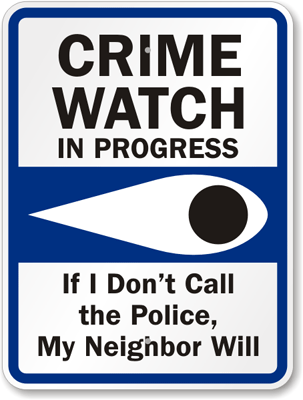
The classic Neighborhood Watch sign that lets perps know that any and all suspicious activity is monitored and reported. Available here.
The most broad-reaching Neighborhood Watch sign is the blue eye, which keeps a vigilant watch on the street and reminds would-be criminals in no uncertain terms that crimes are neither tolerated nor ignored. These signs are the most serious-looking and are a good option if muggings, assault or robbery show up on your precinct’s police blotter — or if you want to make sure they don’t.
What’s more, the blue color is a clear reminder that uniformed cops are still the enforcement muscle behind Neighborhood Watch.
Category: Surveillance


